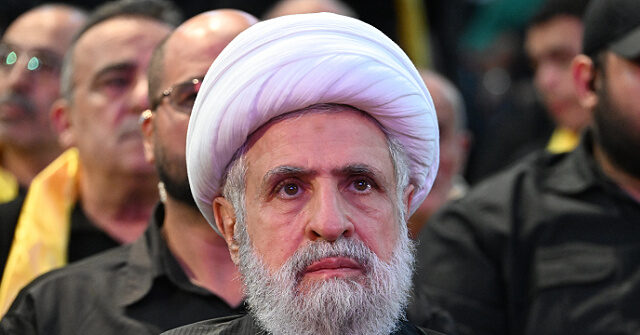In a notable shift, Hezbollah’s deputy leader Naim Qassem announced in a recent televised address that he is open to discussing a truce with Israel, marking a departure from the group’s previous demands linked to the ongoing conflict in Gaza. This change follows significant losses within Hezbollah, including the elimination of its leadership, which has prompted a reevaluation of its stance. Qassem notably endorsed Lebanese parliament speaker Nabih Berri while withholding conditions typically associated with ceasefire negotiations, signaling potential changes in Hezbollah’s strategy amid escalating military pressure from Israel.
The circumstances surrounding Hezbollah’s leadership are currently precarious, especially following the death of Hassan Nasrallah, who had been at the helm for decades. Qassem’s potential designation as the group’s leader—pending the status of Hashem Safieddine, a key figure believed to be the most likely successor to Nasrallah—adds complexity to Hezbollah’s internal dynamics. Speculation arose that Safieddine may also have been eliminated in recent Israeli airstrikes, which targeted key Hezbollah figures, further destabilizing the organization. With these losses, Qassem may find himself in a stronger position, underscoring the vulnerability of the group amid ongoing hostilities.
Israeli officials have reacted assertively, claiming significant operational success against Hezbollah’s leadership. Defense Minister Yoav Gallant affirmed the organization is now “without a leader,” while Prime Minister Benjamin Netanyahu emphasized the degradation of Hezbollah’s military capabilities. Israel’s offensive strategy has notably decimated the ranks of Hezbollah leaders, which Netanyahu leveraged in a broader message to the Lebanese population, framing their predicament as an opportunity to reclaim national autonomy from the grip of Hezbollah’s influence.
Amidst this turmoil, Qassem projected a sense of resilience, asserting that Hezbollah retains its military capabilities despite recent losses. His assertion that “dozens of cities are within range” of Hezbollah’s missiles reflects both a show of defiance and an attempt to reassure his supporters regarding the organization’s operational integrity. He indicated a willingness to engage in diplomatic efforts towards achieving a ceasefire, suggesting that once a ceasefire is established, further discussions on the conflict’s details could ensue. However, he left open the possibility of continuing military engagement if hostilities persist.
Analysis from Israeli media suggests that Qassem’s overture for a ceasefire may be a calculated move in light of Hezbollah’s dire circumstances, indicating a potential admission of weakness. The challenging reality of their losses appears to necessitate a reassessment of Hezbollah’s approach, possibly influenced by external actors such as Iran, which may seek to preserve its strategic assets in the region. It is suggested that this bold proposal for negotiations may also serve as a signal to the Biden administration, which has been eager to play a mediating role in the conflict.
The U.S. administration’s response to Qassem’s announcement is being closely monitored, with indications from White House officials that they plan to engage in consultations with various stakeholders to find an appropriate moment to advocate for a ceasefire. This aligns with their broader diplomatic intent to stabilize the situation in the region. As the conflict continues to evolve, the interplay between Hezbollah’s internal struggles, Israeli military pressures, and international mediation efforts presents an intricate landscape that could reshape regional dynamics and future engagements.

